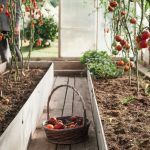DIY Gardening Tools: Comprehensive Reviews and Buying Guide for Your Garden
Ergonomics and Comfort: Picking Tools That Are Easy to Use
Selecting gardening tools that prioritize ergonomics and comfort can significantly enhance the gardening experience. Essential factors include manageable weight and size, ergonomic handles to reduce strain, and additional comfort accessories like gloves and kneelers.
Assessing Weight and Size for Ease of Use
The weight and size of gardening tools are crucial for comfort. Lightweight tools reduce fatigue during extended use, making them ideal for both beginners and seasoned gardeners. A tool that’s too heavy can cause strain, while overly large tools can be hard to handle, especially for those with smaller hands.
Compact hand tools are generally easier to use, particularly for those with limited mobility or strength. Tools with adjustable lengths can also be beneficial, as they allow gardeners to maintain a comfortable working posture. Therefore, it’s essential to try out tools in-store to find the perfect balance of weight and size.
Ergonomic Soft Handles and Their Benefits
Ergonomic soft handles play a significant role in enhancing comfort. These handles are designed to fit the natural grip of the hand, reducing the pressure on joints and minimizing the risk of blisters. Materials like rubber or gel padding can offer additional cushioning, making the tools easier to hold for extended periods.
Handles with non-slip textures provide better control, especially in wet conditions. Contoured handles that follow the shape of the hand can significantly reduce fatigue. Easy-to-hold handles ensure that repetitive motions exert less strain on the hands, wrists, and forearms, making gardening a more enjoyable activity.
Gardening Gloves and Kneelers for Added Comfort
Gardening gloves and kneelers are essential accessories that provide added comfort and protection. Gloves protect hands from cuts, blisters, and soil-borne bacteria. It’s important to choose gloves that fit well and offer good dexterity, while materials like leather or nitrile provide both durability and flexibility.
Kneelers help reduce the strain on knees and back. Padded kneelers offer cushioning, making it more comfortable to work at ground level for extended periods. Some kneelers come with side handles that aid in getting up and down, which can be particularly helpful for those with limited mobility. Investing in quality gloves and kneelers can significantly improve the gardening experience.
Garden Care Essentials: Pruning, Weeding, and Trimming
To maintain a healthy and tidy garden, investing in the right tools for pruning, weeding, and trimming is crucial. While pruning shears ensure the healthy growth of plants, specialized weed removers make weeding less labor-intensive. Trimmers and edgers keep your garden neat and well-defined.
Must-Have Pruning Tools for Healthy Plants
Quality pruning tools are vital for maintaining plant health. Pruning shears are essential for cutting small branches and stems. They come in bypass and anvil types. Bypass pruners, which have two blades that pass by each other, are ideal for green, living plants. Anvil pruners, with a single blade that closes onto a flat surface, are better for dry, dead wood.
Loppers are useful for thicker branches that are too large for pruning shears. These tools have long handles, providing more leverage. A pruning saw is handy for larger branches that cannot be cut with shears or loppers. Ensuring tools are sharp and clean will avoid damage to plants and reduce the risk of disease.
Weeding without the Work: Best Tools for the Job
Effective weeding tools can minimize physical effort and increase efficiency. A hand weeder is ideal for small or precise weeding tasks. This tool has a forked end to dig into the soil and remove weeds by the roots. For larger areas or thicker weeds, a hoe is more effective. A garden hoe cuts through soil and roots, making it easier to remove weeds.
For those who prefer less manual work, long-handled weeders allow for an upright position while weeding. Tools like the stirrup hoe are designed to slice weeds just below the soil surface. Regular weeding will prevent invasive species from overtaking your garden and competing with desirable plants for nutrients.
Keeping Your Garden Tidy: Trimmers and Edgers
Maintaining clean edges and neatly trimmed plants enhances the garden’s appearance. String trimmers are versatile tools used for cutting grass and weeds in areas that lawnmowers can’t reach. They are especially useful for trimming around trees, edges, and garden borders. Electric and gas-powered models are available, each with its advantages.
Edgers specifically create clean lines between lawns and garden beds. These tools can be manual or powered. Manual edgers require pushing down to cut through grass and soil. Powered edgers typically use a rotating blade, making the task quicker and less physically demanding. Regular trimming and edging will keep your garden looking manicured and well-kept.



